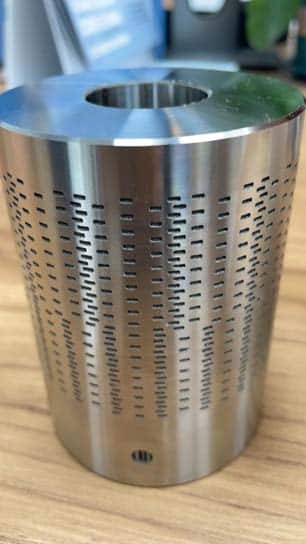In the oil and gas industry, safety and efficiency of the operations are paramount. Additive manufacturing can guarantee low-volume production, part certification from the OEMS, quality assurance, and product optimization while reducing costs and material waste.
Explore design possibilities and new ways to produce strong and reliable parts like pumps, jigs & fixtures, valves, components for turbines, labyrinth cages or sensoring equipment.
Energy production systems are complex and diverse, filled with critical components that can handle extreme conditions. 3D printing technology has advantages in the field of rapid manufacturing of small batch products and complex parts manufacturing, therefore in the context of Industry 4.0, more and more companies in the oil and gas industry are adopting AM to manufacture their key components.
Rapid and Accurate Prototyping. Speed up a part’s time to market and move fast from its digital design to evaluation, testing, and fixing errors before production. Leverage 3D printing to prototype new components for energy infrastructure, facilitating design validation and optimization.
Production Parts. Manufacture with additive obsolete parts that are no longer available from the original manufacturer and extend the lifespan of older equipment.
Customized Solutions. Optimize the production of end-use parts, meeting your specific requirements while reducing costs and material waste. Produce parts with high strength-to-weight ratios, providing enhanced durability and efficiency in your oil and gas operations.
Optimized Supply Chain. Move from product design to reality within hours, not weeks. Digitize your parts and address and inventory issues or obsolete parts with digital libraries. Apply 3D printing to produce on-demand spare parts for critical equipment in the oil and gas industry, reducing downtime.
3D Inspection. 3D measurement technologies truly deliver non-destructive inspections. Compared with contact measurement, 3D laser scanning is much faster and more flexible in capturing full 3D data. The 3D data of complicated curved surfaces, their coaxial and cylindricity can also be easily obtained, while the traditional solutions are challenging to achieve. However, handheld 3D laser scanners can get complete 3D data without damaging the products.
Reverse Engineering. Industrial handheld 3D scanners can capture high-precision 3D data of objects for the reverse engineering of mechanical products. The high precision of 3D laser scanners ensures more accurate reverse modeling, which saves development costs and shortens development cycles for machinery manufacturers.
Maintenance. Mechanical wear is inevitable during the fabrication and application of mechanical products. Even minor errors can cause huge losses, therefore, product maintenance is indispensable. With 3D laser scanners, we can accurately obtain 3D data of mechanical products. This way, we can correctly find the worn parts and better understand how to maintain the products based on 3D data.


